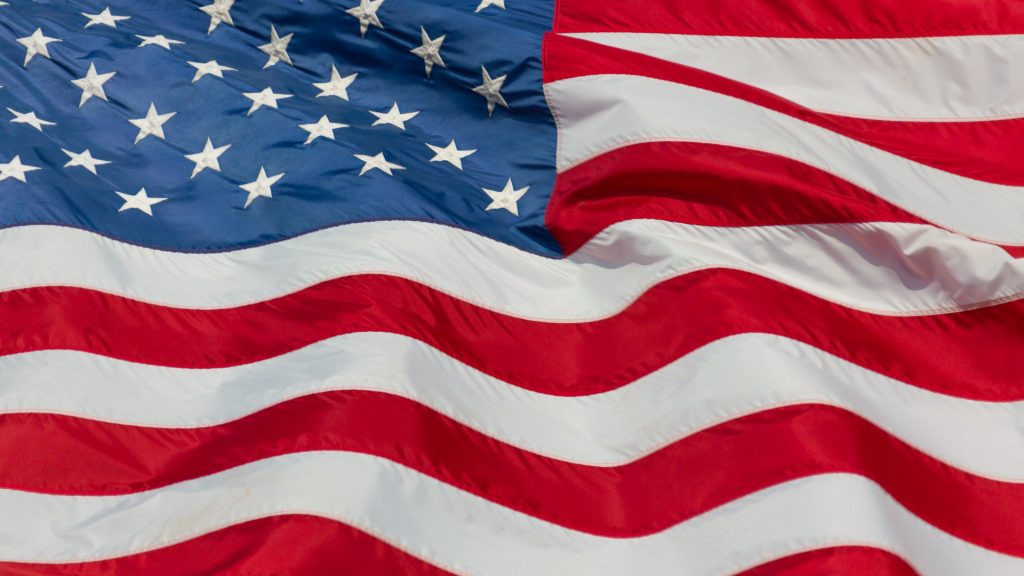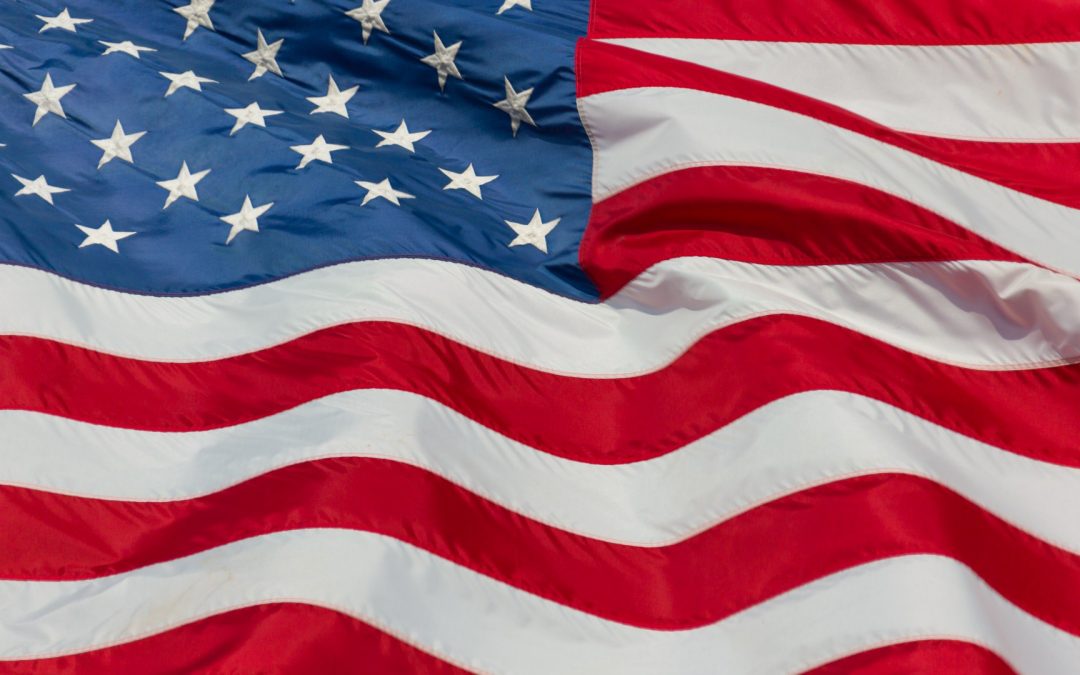
The risk of an American Civil War is remote
Every now and then I hear people express concern that political polarization might lead to a new American Civil War.
Such concerns should not be immediately dismissed. The consequences of a civil war are grave. Such wars can be very bloody and wipe out decades of prosperity. They can be accompanied by revolutions that radically change the governance of a country, often for the worse. If the state remains united, the aftermath is usually one of political centralization.
Civil war can also be followed by the disintegration of the state. History shows that even Great Powers are not immune. The term describing such processes, Balkanization, isn’t merely an abstraction to me. Rather it describes the backdrop of my childhood. I was born in 1988 in the Socialist Republic of Slovenia, a constituent republic of the Federal Socialist Republic of Yugoslavia. This country no longer exists. And while Slovenia itself did rather well, the Yugoslav Wars were a disaster for the region. Will the same be said of California one day?
Since the end of history hasn’t arrived, we must seriously evaluate such scenarios every now and then. Setting aside material interests or the general good, evaluating such political risks can be important for personal safety.
Let’s begin.
It is an interesting question whether America is actually politically polarized, but for the sake of argument let’s say it is. To evaluate the possibility of an American civil war, we should first understand the origin of civil wars in general. You cannot defer to indicators such as pundit statements or perceived public sentiment.
If organic public sentiment drove war and peace, there would be far fewer wars, and the wars that would be fought would be much more stupid and destructive (admittedly the bar is pretty low in that respect already). There does not seem to be a plausible candidate for a popular peace movement that successfully prevented a war.
War is driven by the interests of the powerful. In some societies the powerful might be military officers, in others they are priests, and in others they are diplomats. The incentives and requirements of these people are in turn determined by factors such as geopolitical position, the power landscape, demographics, office politics, party politics, and resources.
Sometimes the political necessities are mostly local — perhaps an attempt to change the distribution of prestige within the elite, or an attempt by an office-holder in a republican system to accumulate power under war measures. When power is secure locally, the factors such people respond to will be more distant. Considerations like the international balance of power or expected future technological development come into practical focus. The interests of elites coming into alignment with raison d’État.
These distant longer term considerations can produce unintuitive political necessities. An example are aspirational wars. They are similar to aspirational products, such as a luxury car or designer handbag, which a large audience wishes to own but cannot afford. Such wars are not imminently necessary, but they demonstrate serious ambition for the enlargement or maintenance of national greatness. This demonstration alone can be very valuable.
For example, the Italian Empire’s wars against Ethiopia in the late 19th and early 20th centuries were economically and strategically dubious, but undertaken to lay claim to a destiny comparable to that of Britain or France. That particular effort proved folly, but national greatness can be indispensable for recruiting and coordinating the ambitious and the exceptional. If the greatest minds in Italy don’t see a path to greatness through aiding the Italian state, then they are liable to apply their talents elsewhere.
Ultimately, whatever the political incentives may be, political players must still act for events to unfold. The skill of such players thus limits the range of events that can take place. As an example, a war to preserve national grandeur will not happen unless someone is skilled at laying claim to preserving such greatness.
Though political players — not the public — cause wars, players pursuing war will nearly always drum up public support for war because support is useful. It helps maintain morale in organizations relevant to the war effort the war and provides moral cover to those pursuing it (“The people want war, not I!”). It is also not very difficult to bring about. Politicians and philosophers since ancient times have observed that public opinion can reliably be shifted to favor the start of war.
Popular pro-war sentiment will usually be manufactured through news, speeches and — on a long enough timescale — education. Even merely talking about a proposed war makes pursuing it more popular. The methods may have changed — from pamphleteering to radio and most recently to social media — but they have only become more effective and more centralized over time.
The way to distinguish empty bellicose sentiment from real ramp-up to war is preparation. If there is a party spreading war sentiment, but this party is not preparing logistics for war (financial, industrial, diplomatic, raising armies) then the sentiment is not a sufficient sign of war.
These facts about war in general apply to civil wars as well. If these fundamentals are in place, a player can trigger a civil war through directly challenging the entrenched institutions that in their normal operations respond with violence.
There are three usual and two marginal kinds of civil war:
- Proxy Wars. Since the 20th century most civil wars have been proxy wars. In proxy wars an external power supplies, arms, and sometimes even fights in the conflict. The conflicts are only viable because they are instigated and supported by an outside power. Modern centralized states have little difficulty crushing insurgencies that lack such support. Examples include the Chinese civil war between the Communists and Nationalists (supported by the Soviets and Americans respectively), and the Syrian Civil War (where Russia backs the government and the West backs rebels). Another category of example in the more distant past were the wars of succession in monarchies; these were mostly proxy wars or outright foreign wars where outside rulers tried to claim the throne.
- Military Commander’s Wars. In these civil wars, commanders of the armed forces possess some personal loyalty from existing forces. The military forces fragment along the lines of chains of command, as these commanders contest each other directly. As a rule, military forces do not remain relevant if they are too fragmented. If the preponderance of armed forces moves as a unit what follows is a coup rather than a civil war. A civil war happens between these two extremes, when the military is disunified enough to not be able to pull off a coup, but not so disunified as to be irrelevant. When several sizeable factions of the military seize the means of production or wealth to fund themselves in territory they control, they can sometimes prolong the war past the exhaustion of initial forces. Some 20th century civil wars are of this kind. Roman civil wars were such as well.
- Sub-state Civil Wars. A part of government with enough logistical ability to wage war uses this ability to resist an attempt at centralization or itself attempts to force decentralization. This act requires a strong local government with a tax and demographic base. A vital resource that usually takes years to acquire is trained military personnel. The local government needs to be a very healthy organization with either an already established military or the ability to establish one quickly. Examples of this phenomenon are the American Civil War (where several US states banded together against the rest organized under the Federal government), the American Revolutionary War (note French financial and military assistance, producing partially a proxy war), and the Yugoslav Wars (with a decisive foreign factor).
- Insurgencies. There is no strong border between an insurgency and a civil war. The relevant distinction is usually one of scale and success of the insurgency. No insurgency can grow to the level of being able to challenge a state without a situation described in the first three cases. It might be possible for such a minor insurgency to hold out for a long time: A lone Japanese officer continued fighting WW2 for a good 30 years after retreat of Imperial Forces, after all. But these are not the large transformative and destructive events people associate with the term “civil war.” Even a more prolonged ordeal with moderate but not decisive outside support, like that of the post-1969 IRA against the United Kingdom, is not usefully described as a civil war.
- Religious Cult Wars. These haven’t been seen in many centuries, and historical evidence is at times too scant to not rule out that they actually simplify to one of the first three cases. I am, however, including them for completion. A coordinated religious organization can infiltrate government and gather enough resources to wage war. The only example of this I can think of is the ruinous Yellow Turban Rebellion, where a few brothers conspired against the Han Dynasty to bring about a Daoist Millennium; they lost, but not before plunging China into a dark age. Most other local religious cults are quickly snuffed out by state power.
Now to examine if any of the above are plausible in the United States today.
- A continental Proxy War? No foreign power, not North Korea, not Russia, not Iran, and not even China can provide sufficient logistical support to forces on the American mainland. The US navy can easily control the coasts to prevent such shipments, if need be, by expanding to control Canada and Mexico’s coasts as well. US air supremacy renders air support implausible as well.
- An American Mark Antony? A military commander challenging the rest of government needs more than a rich and beautiful Cleopatra on their side. The loyalty and confidence of those under their command is required. This loyalty has to rest substantially on personal charisma, since patriotic appeals can be made by both sides in a civil war. American administrations, left and right, have tended to retire and sideline generals that have become too respected by their troops. The confidence must be sufficient that challenging the rest of government seems a fight with decent odds. Which American today possesses such charisma? Not one. The days of Patton and MacArthur are long gone. Some might object that a valid claim of domestic enemies in government endangering the constitution could substitute. However the understanding of constitutional law doesn’t scale. Soldiers would have to be told by a rather visible authority that the constitution is being violated in a way that requires imminent military action, something like a public declaration by the President of the United States or the Supreme Court. This could be bypassed if a charismatic, war-tested former-general somehow successfully ran for president, as Grant and Eisenhower did. In the public imagination, the President is the face of government, backed by his ability to project force. I expect such a move to result in a successful self-coup, with little to no military resistance, hence no civil war.
- Another war for States’ Rights? American states are much weaker compared to the Federal government than they were in the 19th century American civil war. They are fiscally and demographically miniscule (with the possible exception of California), as well as organizationally atrophied since they attract even less talent and fewer exceptional individuals than the Federal government does. No other institutions in the US, be they the FBI or the NSA, possess comparable organizing capacity either. Texas is the state with the most culturally distinct identity. It would, however, be no match for the rest of the United States. If Texas ever secedes it would do so in a peaceable manner due to political circumstances similar to the fall of the Soviet Union.
- Insurgency. I have predicted that an insurgency would not rise to the level of civil war. In an age of satellite imagery and mass digital surveillance, it would be summarily crushed without the support of an outside power, if by no other means than airpower and drone strikes. Facial recognition on everyone’s phones means that it is harder for a rebellious citizen to melt into the population. Even without such tools, the Waco siege is a recent example of armed forces being more than willing to move against civilians.
- Republic of Gilead? Again, this is by far the rarest kind of civil war, one that hasn’t been recorded in the recent past. Fear of Christian political ideologies seeking to seize power and implement Biblical Law aside, the organizations associated with such views have seen better days. America possesses no majority religion of any substance. In the unlikely case that religion again becomes a dominant social force, expect contention and strife dividing denomination against denomination. No particular sect would be able to assemble enough resources to seriously challenge the government militarily.
Given that none of the historical mechanisms look plausible in today’s US, why are fears of an American civil war so common? I think it goes back to the mythologies of our age. We want to believe governments are responsive to their populations, a kind of political supply and demand. When we see rhetoric or cultural tensions, it intuitively seems plausible this kind of demand will be met with instant organizational supply.
Someone on Twitter posts incendiary rhetoric and, lacking better models, we feel a twinge of anxiety. Looking at political and organizational fundamentals is reassuring. Naturally such fundamentals can move quickly, on a scale of a few years, but have a pace and signature different than this mentioned ‘political demand’. Neither personal authority nor large scale logistics are built in a flash of emotions.
To see how ephemeral those are consider: Can you remember the most prominent tweet of last year? Taking a break at times from hectic national conversation, driven by social identity and emotion, to look at fundamentals offers us a better way to address anxieties and set our expectations for the future. Why forgo it?





